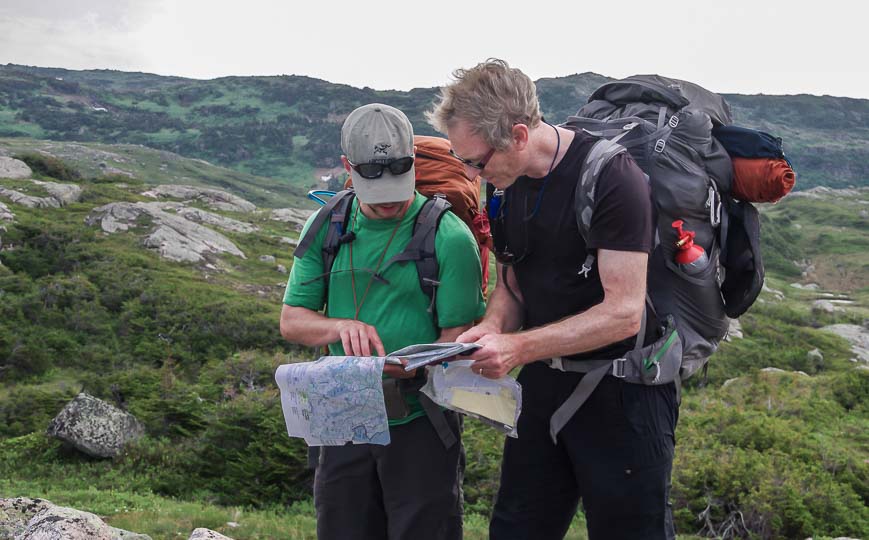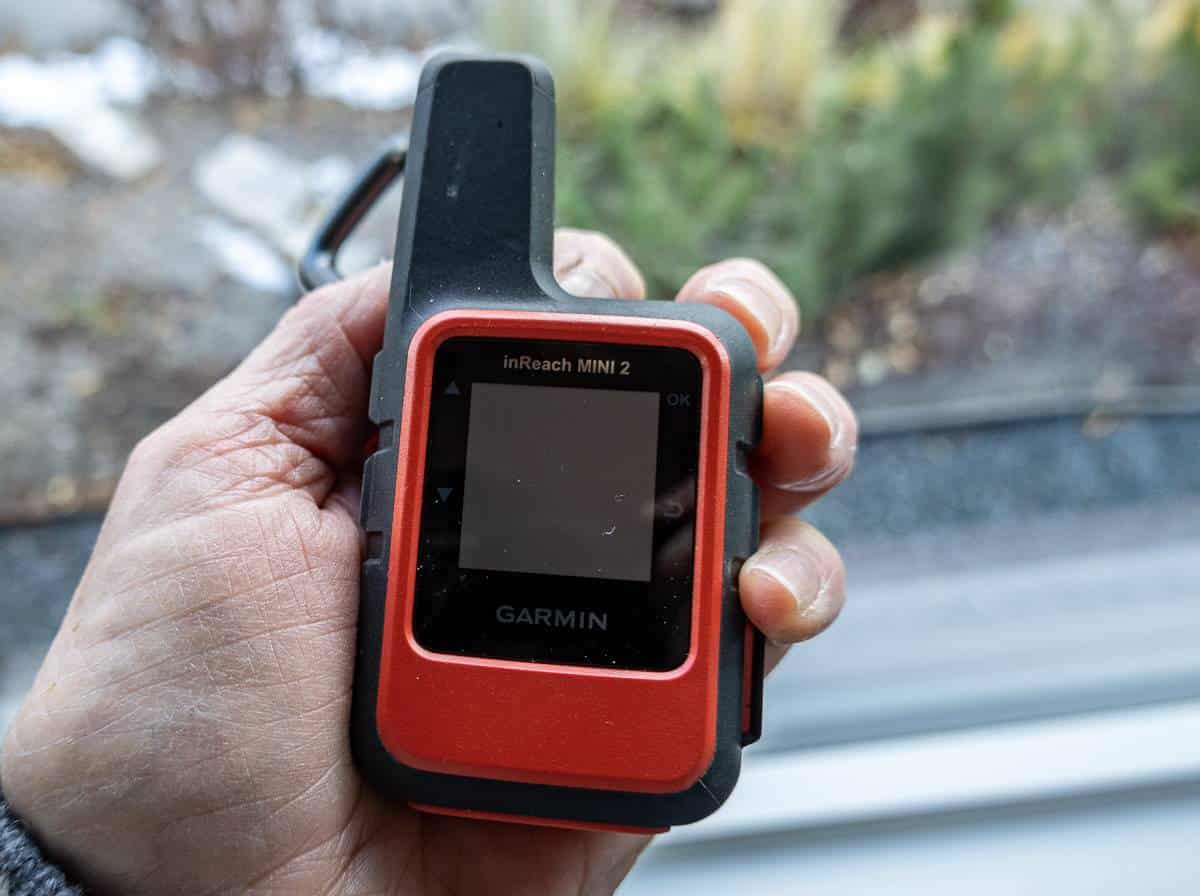Hiking Essentials Everyone Should Carry
The original list of 10 hiking essentials came from the Mountaineers, a Seattle based organization for climbers and outdoor adventures and the people behind the bible of mountaineering Mountaineering: The Freedom of the Hills. The idea then as it is today, is that people be prepared for emergency events outdoors, even if it’s miles from civilization. The 10 hiking essentials list has since been slightly modified, primarily to keep up with technology.
I try to have my day pack ready to go with the 10 hiking essentials – so I don’t have to give it a second thought.
It’s modified depending on the season, expected weather, duration of trip and location of the hiking, backpacking, kayaking or camping adventure.
This post includes affiliate links. If you purchase an item through these links, I receive a small percentage of the sale at no extra cost to you. Thank you very much for your support.

Would you like to save this?
Hiking essentials – an updated list of the most important ones
Navigation: Topographical map, compass, GPS, altimeter, depending on circumstances a personal locator beacon (PLB) or satellite messenger. I also recommend Organic Maps – an offline hiking app.
Headlamp: Don’t forget extra batteries.
Sun protection: Sunscreen, lip balm with sun protection, sunglasses
First aid: The size of the kit depends to a certain degree on where you are going for how long and how far from medical assistance you might be. Include insect repellent and foot care.
Knife: Add a gear repair kit too.
Fire: Include matches, a lighter, fire-starter, and even a stove depending on what you’re doing
Shelter: Can be a lightweight emergency bivy sack (even thick garbage bags can work) and/or a tent
Extra clothes: Beyond the minimum needed for your adventure; partially season-dependent
Extra food: Carry more that what you need, up to several days food depending on what you’re doing and where you’re going.
Extra water: Always take more than what you think you’ll need. Purification tablets and a filter also come in handy.
Each trip you take into the outdoors is going to look a little different so become an expert at tailoring these 10 hiking essentials to the trip. The longer, more remote and complex the trip, the more you’ll find you need all of these tools.
Don’t forget to include the weather as a factor. Read my true story below to understand why.

This is why you need to carry the hiking essentials!
The event described happened 30 plus years ago near La Ronge in northern Saskatchewan at a bush camp close to where my husband worked. There was a young woman who was the cook in camp. She sometimes had time on her hands and wanted to be doing more than just the cooking.
One beautiful, unseasonably warm, sunny day in January she was finally given her chance and was told to do a traverse and hook up to a known point.
Unfortunately miles into the traverse a blizzard literally blew up out of nowhere. She was poorly dressed and woefully unprepared. Nevertheless she continued walking for close to 20 miles looking for a known road (while actually paralleling the nearby road) until she succumbed to the cold.
They found her frozen in a sitting position with a compass in her hand. Had she carried the 10 essentials, chances are she would be about 55 years old today.
Emergencies can occur in any weather to anybody anywhere in the world. So, if you’re heading outdoors into any sort of wilderness situation then packing the 10 hiking essentials could save your life or at the very least make an emergency situation more comfortable.
Navigation essentials
A good topographical map is a necessity in my books but you should know how to read it. A GPS does not replace a map, especially because batteries can die. Not only should you have a map but you should know how to read it.
Know how to use a compass even if it does sound like an antiquated piece of equipment in the digital age. But it always works. Okay – not always; it doesn’t work if you are around strongly magnetic rocks or in the vicinity of the magnetic north or south pole. This is the compass I use. It has a mirror which helps with putting in my contacts but could also be used to signal a plane.
I have yet to own a GPS but it does have some advantages with accuracy the chief one. It’s extremely adept at pinpointing your location on a digital map. But it runs on batteries so you may need to carry extra batteries or use a solar recharger. REI has a great article on how to choose and use a GPS. Read it before you purchase anything.
If you’re in the mountains an altimeter watch or device can be very useful, especially in poor visibility conditions. It measures air pressure with a barometric sensor and can help you figure out your location on the map.

Personal locator beacon (PLB) or satellite messenger
A personal locator beacon can also be useful in the backcountry as they alert emergency personnel if you need help. Once you’ve activated them, your position is determined using GPS and a message is sent via satellites.
On the Long Range Traverse in Newfoundland we were provided with a SPOT and told to activate only if there was a real emergency. One gentleman had activated it – which causes a chain of events to occur rapidly – including the sending of a helicopter.
He had seen a moose, a common and actually wonderful experience in Newfoundland. I don’t know if he had to pay for that helicopter or not. These devices though great, especially when there isn’t a cell phone signal, should only be used in real emergencies!!
Obviously not that many people actually need it – but if you’re going somewhere remote you’ll certainly provide family members and friends with some peace of mind. Note that you also have to pay separately for a satellite subscription. The other option is the slightly less expensive InReach Mini.

A headlamp with spare bulbs and batteries – one of the hiking essentials
A headlamp keeps your hands free, an important consideration when you’re hiking. If you’re heading out on a remote trip put in fresh batteries before you leave.
Get one with high lumens so you can really see some distance. It doesn’t have to be super fancy but a couple of lighting levels can be helpful as can red night vision (also useful for photographers at night.) There are so many choices across all price points. I’ve been a fan of Petzl headlamps and have only gone through perhaps three of them over several decades.
Sun protection – one of the very important hiking essentials
I would be lost without a good pair of lightweight sunglasses. Good ones should block all UVA and UVB. Find ones that fit comfortably and take two pairs if it’s a long trip you’re heading out on.
If it’s a true mountaineering trip on snow you’re planning to do then you’ll want a pair of sunglasses that also block out the light at the sides.
Sunscreen with at least an SPF value of 30 is a great idea as is lip balm.

First-aid kit
A good first-aid kit can make one heck of a difference in an emergency. You can buy ready-made first-aid kits – which is what I do – and then add the extras I need.
Hikers need blister treatment like Compeed (I truly swear by this stuff and it’s worth every penny), gauze pads, adhesive tape, disinfecting ointment, Polysporin and over the counter medication like Advil, Tylenol and Benadryl.
Don’t forget the nitrile gloves. My first-aid kit gets bigger if I’m going on longer trips, especially to remote places. Then I make sure I have anti-diarrheals, Diamox if I’m heading to altitude, and a prescription antibiotic that I get from my doctor. Throat lozenges or hard candy is also a good idea in the mountains or in a dry climate.
Knife
I’m a fan of a Swiss Amy knife that has scissors and screwdrivers along with a couple of knife blades. For a repair kit I find duct tape and cable ties cover most things.
Fire starter – one of the must have hiking essentials
Always bring what you would need to start a fire – waterproof matches, a lighter and some sort of fire-starter. Note that many of these things can’t be taken on the plane and you’ll need to purchase on the ground. There is a magnesium fire starter multi-tool that works in any weather and you can buy pre-made fire starter though a candle or dryer lint works really well too.

Shelter
If you’re off on a backpacking trip you already have a tent so you have no worries. However on a day hike you still want to be able to stay warm so a bivy sack or even an extra-large heavy duty green garbage bag can do the trick.
And don’t forget to get out of the wind. I also always carry an emergency blanket that really does a good job of keeping you warm.
Extra clothes
Carry rain gear unless you’re in some place like Chile’s Atacama Desert – the driest place on earth. I try to remember to bring a warm hat and gloves in case an unexpected snow storm rolls in. And I always have layers of fleece and windproof clothes.

Extra food
An extra day’s worth of food is ideal for warmth and strength. I usually take an assortment of bars and a mixture of nuts and dried fruit. It’s also a good excuse to carry chocolate with you too.
Extra water – the heaviest of the hiking essentials
I hate carrying too much water because of all the weight that it adds. (One litre of water weighs a kilogram.) So often I’ll look at a map beforehand to see if I’ll be passing any lakes or streams. If that’s the case I’ll fill one large Nalgene bottle. I like wide-mouth bottles in cold weather as it can be hard to drink out of a narrow one in winter as the top inch of the water bottle freezes first.
I bring either water purification tablets or a water filter and refill my bottle – unless it’s going to be a super hot hike and then I don’t take chances. The Life Straw is also a good lightweight choice. We’re taking one to Patagonia even though you can supposedly drink right from the streams.

More reading on some exceptional hikes
- 5 of the Best Hikes Near Boulder, Colorado
- 10 of the Very Best Hikes in Arizona
- 10 Breathtaking Lake Louise Hikes, Banff National Park
- 3 Pinkham Notch Hikes You’ll Want to Do
- 4 Arctic Hikes in Ivvavik National Park, Yukon
Click on the photo to bookmark to your Pinterest board.





Great reminder! I’ve been on some longer hikes recently and realized I was missing some of these essentials. I’ll definitely be packing a first aid kit and extra snacks on my next trail adventure
“The packing list is super helpful! I always forget something when I hike, but now I have a comprehensive guide to follow. Thank you!”
Hi Leigh, this travel essentials are really helpful. Thanks for the tip.